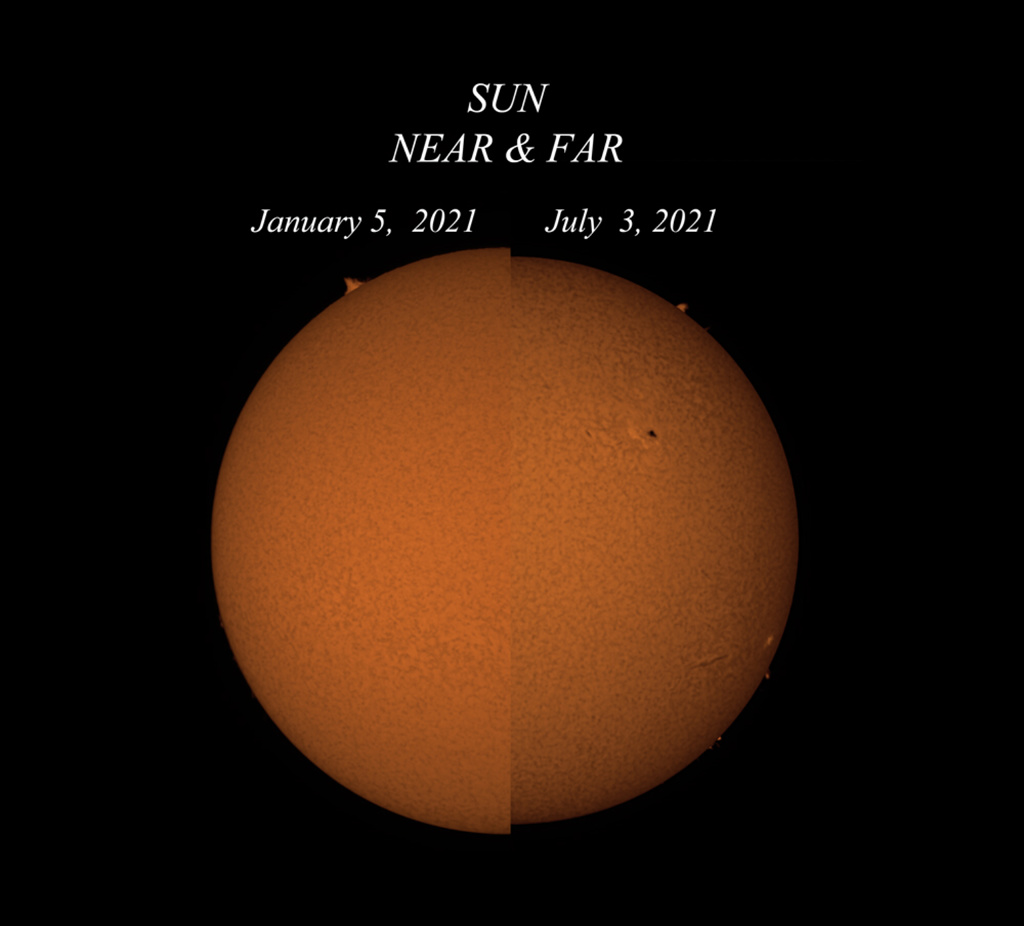2021年7月8日
Perihelion to Aphelion
Image Credit & Copyright: Richard Jaworski
Explanation: Aphelion for 2021 occurred on July 5th. That’s the point in Earth’s elliptical orbit when it is farthest from the Sun. Of course, the distance from the Sun doesn’t determine the seasons. Those are governed by the tilt of Earth’s axis of rotation, so July is still summer in the north and winter in the southern hemisphere. But it does mean that on July 5 the Sun was at its smallest apparent size when viewed from planet Earth. This composite neatly compares two pictures of the Sun, both taken with the same telescope and camera. The left half was captured close to the date of the 2021 perihelion (January 2), the closest point in Earth’s orbit. The right was recorded just before the aphelion in 2021. Otherwise difficult to notice, the change in the Sun’s apparent diameter between perihelion and aphelion amounts to a little over 3 percent.
Tomorrow’s picture: pixels in space
近日点与远日点
影像提供与版权: Richard Jaworski
说明: 2021年的远日点出现在7月5日。在地球绕行太阳的椭圆轨道上,这个点是离太阳最远的位置。不过地球与太阳的距离,并不是造成地球季节的原因。地球的季节变化是来自地轴的倾斜,所以7月是北半球的夏天及南半球的冬天。顾名思义在7月5日远日点那天,从地球看出去太阳的视张角最小。这幅简洁的太阳比较影像,组合自相同望远镜和相机所拍摄的照片。左半图摄于2021年,最靠近太阳的近日点那天(1月2日)。右半图则是摄于2021年的远日点那天。太阳的视直径,在近日点及远日点时的差别只有3%,所以除非并排比较难以察觉。
明日的图片: pixels in space



